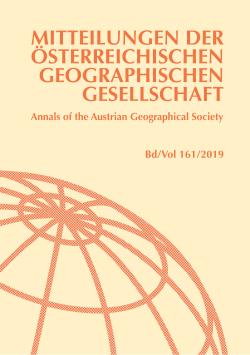
Mitteilungen der Österreichischen Geographischen Gesellschaft Band 161/2019, pp. 271-290, 2020/03/24
Band 161 (Jahresband), Wien 2019
Volume 161 (Annual volume), Vienna 2019

This paper focuses on the automatic detection of hot spots on heterogenic roofscapes in high resolution airborne thermal imagery. Previous approaches to detect hot spots required either emissivity corrected TIR-data or are only applicable to roofscapes with uniform roof materials. Here we present an automatic detection process using TIR-data without emissivity correction. To achieve this, every single roof and every roof material in the study area has to be acquired from remotely sensed imagery. This is obtained by using an object-based image classification approach based on orthophotos (RGB / IR) with sub-meter spatial resolution and a digital surface model. The hot spot detection is based on a two-step statistical criterion for every previously detected roof envelopes and roofing material. Firstly, the hottest spots on a roof are located by using a peak detection and secondly, a focal neighbourhood function is used to delimit thermal anomalies. The developed method was applied to TIR-data from the Thermal Airborne Broadband Imager (TABI-1800) with a spatial resolution of 0.6m x 0.6m. The results demonstrate that the developed method is applicable for heterogenic roofscapes, whereas the detection process highly depends on the roofscape complexity.
Keywords: Airborne thermal imagery, TABI-1800, roof heat loss detection, hot spots, object based classification